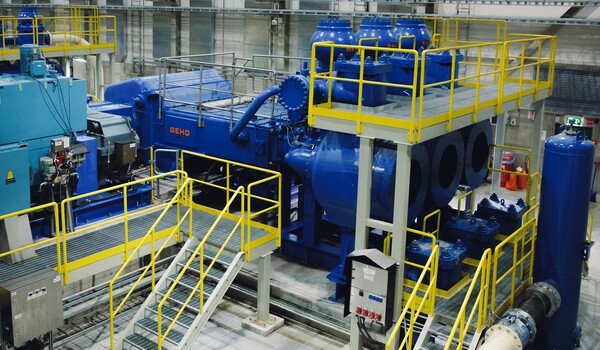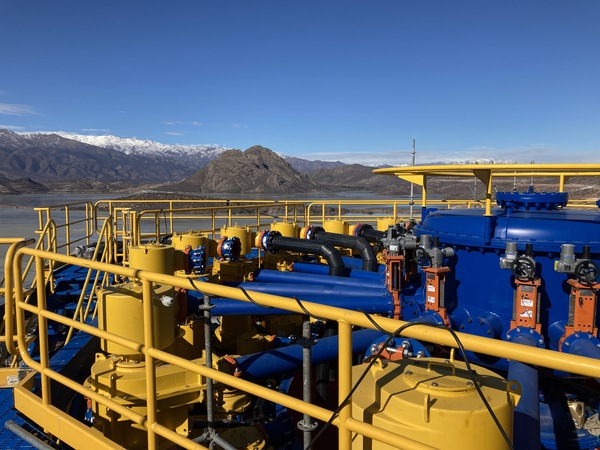It's important to be clear-sighted about the nature and the scale of this challenge if the industry is going to develop safe and sustainable solutions that are also economically viable, according to, Weir Minerals global manager of tailings and backfill Erik Vlot.
"There is no ‘one-size-fits-all' solution because each operation has to contend with unique climatic, topological and geological conditions, as well as the metal being processed, all of which influence the nature of the tailings and the possible solutions," Vlot said.
"Innovative technologies and, equally as important, creative, future-focused thinking will play a vital role in overcoming some of these challenges.
"There are three pillars that guide our thinking and the conversation we're having with our customers. Firstly, let's rethink the basic assumptions the industry has about tailings; secondly, how can we reduce risk, the environmental impact and the total cost of ownership; and, thirdly, can we repurpose tailings in a way that transforms the current value proposition?"
Rethink
Weir Minerals is re-evaluating many of the most basic assumptions about tailings that have long been taken for granted.
"We're developing solutions that harness existing technologies and this begins in the pit, rather than focusing exclusively on the product that leaves the concentrator," Vlot said.
"For instance, ore sorting - typically utilised to deliver higher grades - can also minimise downstream tailings problems by removing problematic gangue phases that might require adjustment to how the tailings are treated. In addition to the benefits in terms of tailings storage, this also reduces water and energy consumption and increases throughput because less non-valuable metal is processed.
"Similarly, our Enduron high pressure grinding rolls (HPGRs)with air classification deliver inter-stage beneficiation, while coarse particle flotation (CPF) reduces the quantity of fine tailings. These and other technologies help improve the geotechnical stability of the tailings, allowing for safer storage [and] improving the effectiveness of dewatering," he said.
Vlot said he believes Weir Minerals is uniquely placed to offer this approach and these solutions because of its all-of-mine capabilities.
"It is important that we listen to our customers' challenges and requirements and deliver solutions accordingly, rather than forcing technologies on them that align with our product portfolio. Where we have gaps, like with CPF technology, we seek industry partners - as we've done with Eriez - that help us tailor solutions to our customers' needs," he said.
"Our product offering is backed by a team of experts who not only know the equipment inside out, but also have process experience, while the Weir Technical Centres allow us to carry out test work and partner with miners to develop solutions based on their specific needs and unique site requirements. And this work isn't limited to the laboratory. We also support our customers with full scale demonstrations, from circuit design through to on-site sampling and reporting.
Reduce
When it comes to tailings management, while the means must be bespoke and site-specific, the ends are broadly the same across the industry. Simply, how can tailings be processed, managed and stored in a way that reduces the environmental impact, risk, energy and water consumption, the tailings storage facility (TSF) footprint, and the total cost of ownership.
There are obviously a multitude of variables that go into getting this balance right and there are often various stakeholders, shareholders and local communities with competing views.

Weir Minerals GEHO® PD pumps reduces tailings footprint in European mine
In navigating these challenges, Weir Minerals take a Life Cycle Management (LCM) approach, which allows miners to analyse the tailings system from cradle to grave, while considering the subsequent impact of the tailings system on the environment, Vlot explained.
"LCM ensures all variables relevant for the tailings disposal system are considered and factors that may be detrimental are recognised upfront. Total investment costs and liabilities are also weighed up when selecting the tailings disposal system, enabling the selection of the best techno-commercial method and system," he said.
"As a case in point, there is sometimes a misconception in the industry that filtered tailings solutions are the most environmentally friendly. While that is certainly the case in some instances, what LCM analysis does is encourage miners to think about the challenge and sustainability more holistically.
"Filtered tailings solutions are extremely energy intensive; once the filter press has produced the cake, it then needs to be transported, spread and compacted," Vlot said.
Weir Minerals' Integrated Solution for thickened tailings management and transportation - where the waste stream is dewatered to remove up to 76% of the water, which is then recycled back to the process - creates a stable tailings stream that can be moved with positive displacement pumps.
Weir Minerals' proprietary Terraflowing™ technology, which is based on this thickened tailings methodology, strikes the perfect balance between water stability and emissions, according to Vlot.
"Compared with filtered tailings, Terraflowing technology produces two to four times less CO2 emissions, providing a lower total cost of ownership and providing an end result very close to filtration.
"With our GEHO technology, Weir Minerals can effectively pump these dense pastes over very long distances if required, allowing miners to store their tailings a significant distance from the mine without having to use trucks for transportation. More generally, the paste produced via Terraflowing technology is relatively stable and requires substantially reduced storage volumes, thereby extending the life of existing TSFs," he said.
"Moreover, our Synertrex intelligence platform provides a holistic view of our equipment's capabilities and performance in various applications, resulting in valuable and actionable insights. It employs different tools such as composable digital twins, which can eventually lead to a fully autonomous system, focused on improving Overall Equipment Efficiency and reducing the environmental footprint of our customer's sites significantly."
Vlot added that "the future of the Synertrex intelligence platform includes the benchmarking and optimisation of individual equipment and eventually extends to entire processes, focusing on aspects such as performance, sustainability or any key performance indicator our customers deem critical to their future."
Repurpose
"I think the holy grail for the minerals processing industry would be to transform tailings from a loss-generating waste product into a revenue-generating resource," Vlot said.
Weir Minerals already has several technologies that have been integral to implementing these ‘tailings-as-a-resource' solutions in different parts of the world.
"The development of the Cavex DE hydrocyclone - a two-stage classification and separation system incorporated into the one piece of equipment - was born out of close collaboration with a customer - a South American miner located in an earthquake-prone region - that wanted to utilise its tailings to construct its TSF dam wall.

Weir Minerals Cavex® DE cyclone cluster repurposes tailings in South American mine
"Ensuring the structural integrity of the wall was paramount, which meant that the sand had to have relatively free-draining characteristics - or, in other words, sand that's 15% passing minus 200 mesh (75µm).
"This requirement helps prevent liquefaction, the process by which water-saturated, unconsolidated sediments are transformed into a substance that acts like a liquid.
"Typically, tailings would have to pass through several stages of hydrocycloning to achieve this sand quality; however, with the Cavex DE hydrocyclone, it can be achieved in a single stage," Vlot said.
"With a conventional hydrocyclone, 35-40% of mass is usually sent to the underflow, but, with the Cavex DE hydrocyclone, it is around 45-55% - making it 10-15% points more efficient than any other hydrocyclone on the market."
Similarly, declining ore grades are leading to higher demand for mining backfill solutions to increase recovery, reduce the amount of tailings stored on the surface and stabilise the mine, providing a safe working environment and facilitating further exploration, Vlot explained
"Paste backfill is a high-density, viscous slurry and, for that reason, one of the most demanding pumping applications. GEHO hydraulic driven piston pumps have solids handling capability up to 90% concentration, making it one of the most reliable tried-and-tested piston pumps on the market today," he said.
"Ultimately, Weir Minerals' aim is to be a reliable partner able to provide miners with the equipment and tailored solutions they require, while also doing [its] part to drive technological development to make tailings management safer, more sustainable and less of a cost burden."
ABOUT THIS COMPANY
Weir
With world class engineering expertise, Weir works in partnership with our mining customers to solve their operating challenges safely, efficiently and sustainably.
CONTACT DETAILS:
- Website: http://www.global.weir/
- Email: https://www.global.weir/contact-us/
























